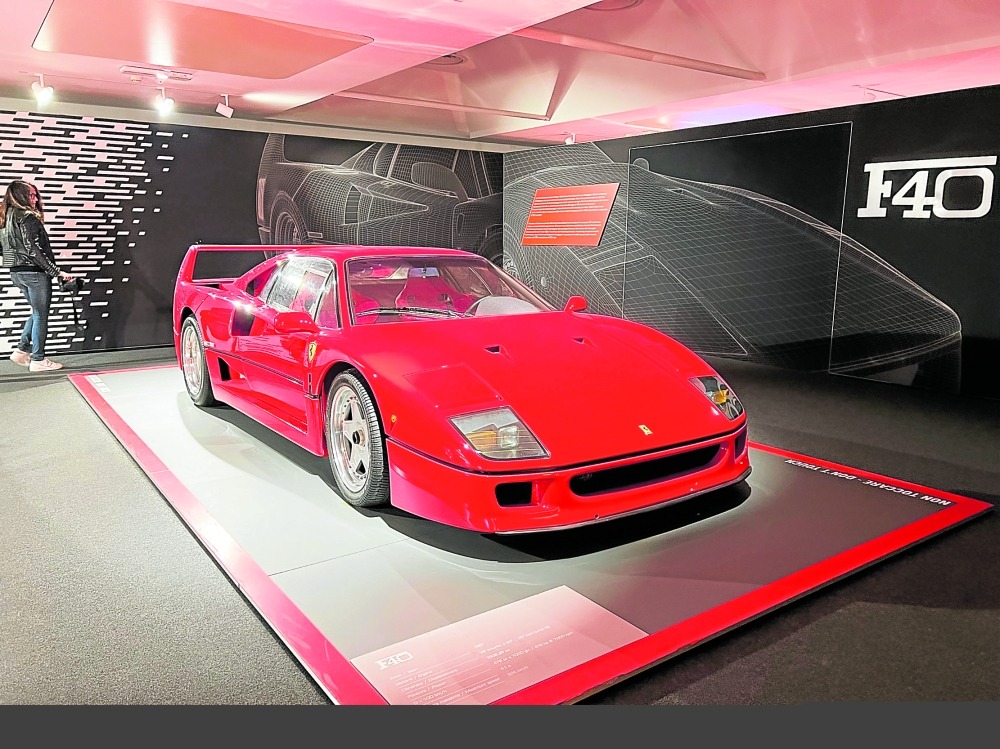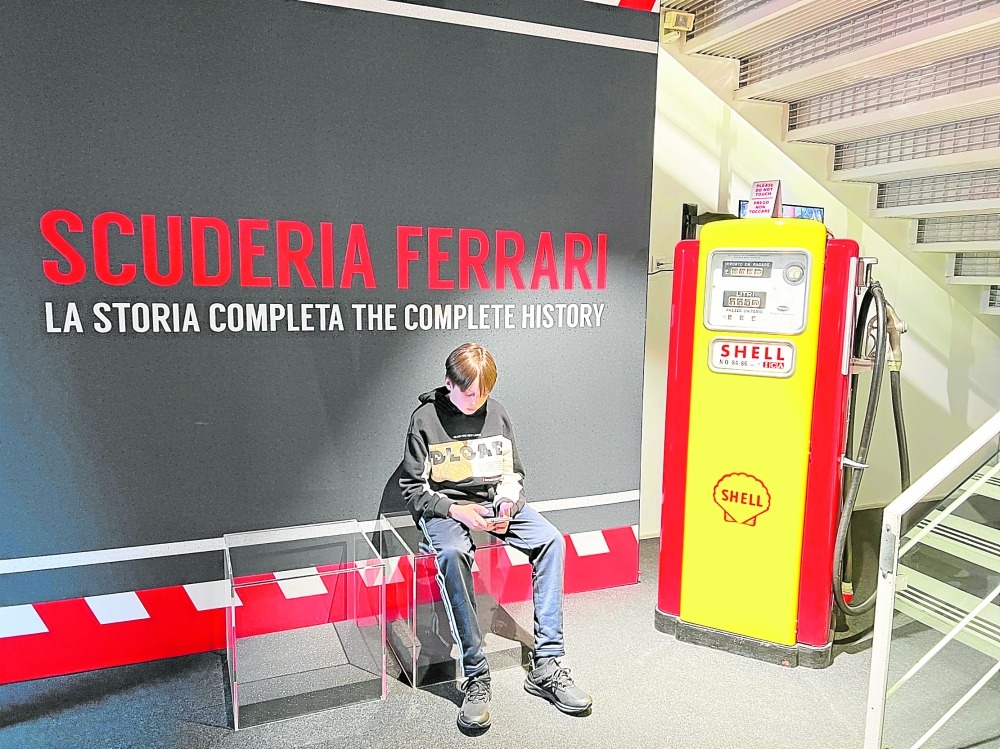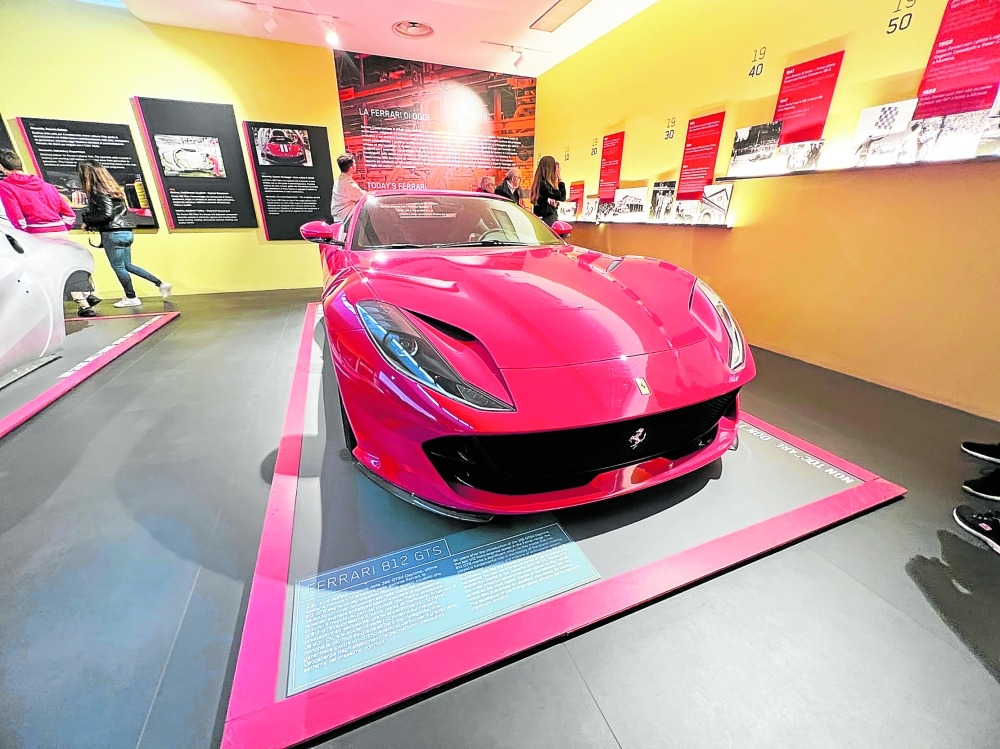By Rafael C. Ang
Mention Maranello to any avid car enthusiast and one thing immediately comes to mind: Ferrari. Nestled in the sprawling Italian countryside, the Ferrari Museum is a treasure trove of the car brand’s history. Ferrari Museum Maranello contains catalogued artifacts of Ferrari’s development and housing rare cars which had enthusiasts like my dad circling and taking pictures like dazzled pilgrims at St. Peter’s. Owing to the surge in popularity of Formula 1 and Ferrari’s team in particular, many visitors lined up to enter the museum, disciples from around the world being on time for early Father’s Day outings.
The supercar overload begins at the Museum’s second floor. Visitors are greeted by a stunning grey Ferrari 250 LM with stripes containing the blue, red, and white colors of the French flag. This rearmid engine vehicle, which was shown at the 1963 Paris Motor Show, was designed to take the place of the illustrious 250 GTO as a model for race-driver clients. As if that wasn’t enough to testify to Ferrari’s technological and aesthetic prowess, to the right of the room sits a Ferrari 812 GTS, providing the perfect contrast between old and new Ferrari. The 812 GTS is the most world’s powerful production convertible, with 788hp on tap from its V12. The body shell of the 812 GTS sits to the left of the actual car, further exemplifying the many developments made over time. After admiring the two machines, we proceeded left to a small bridge leading to an entirely different portion of the museum: The supercar wing.

Paint shimmers, perfectly polished wheels shine, and the lights are cast onto one of the first things you see in the dramatically lit room: A dazzling Rosso Corsa red Ferrari F40. The last vehicle to be personally approved by Enzo Ferrari, this breathtakingly famous racer turned road car sports a luscious twin-turbo V8 and 478 horsepower, astonishingly high for its time. You can peek at the brawny V8 through the F40’s perspex engine cover just behind the cockpit. Back at its 1987 launch, the F40 was priced at around 400,000 dollars. Buying one in mint or nearly brand-new condition can cost you more than ten times that today. F40 is situated beside its predecessor: An equally impressive Ferrari GTO. The GT0 is a mid-engine supercar, its turbocharged V8 pumping out 395hp. Right beside the door stands a bright yellow Ferrari F50, with yellow seats and a yellow rear view mirror to boot. Only 349 F50s were ever made, and only 31 yellow F50s were produced, making it one of the rarest high performance cars made by the Prancing Horse.
Next, we feasted our eyes on a glimmering Ferrari Enzo. Boasting cutting-edge technology, the Enzo possessed some of the very best innovations at the time. Named after the founder himself, only 400 were ever made. The last one was commissioned for Pope John Paul II and the Enzo was tuned and tested by Michael Schumacher himself. With an engine based on the Maserati Quattroporte’s V8, the Enzo also made use of carbon-ceramic brake disks, an essential option for high-performance cars today. The brakes are a necessity for its spectacularly powerful engine, sporting a monstrous 660 horsepower.

Following in the footsteps of the Enzo, the Ferrari LaFerrari sits just a few steps away. Marking yet another significant change in the history of Ferrari, with it being the first-ever car with hybrid technology to be produced. With the capability to go from 0-60 in under three seconds, with an astounding maximum power output of 950 horsepower, and with a sleek new aerodynamic design, the LaFerrari is truly a force to be reckoned with.
Speaking of forces to be reckoned with, Ferrari famously dominated the F1 championships during Schumacher’s turn at the wheel. A highlight of the museum for any F1 and Ferrari fan is a room with the exact F1 models used are raised on a circular platform, providing a visual odyssey of the racing development and the passion of the teams. The F1 cars even bear some battle scars with scuff marks clearly visible on some of the displays. Their moments of glory are captured in videos showing the winning moments and drivers holding up the trophies.

As you round the building going to the driving simulators and the inevitable gift shop, you get a rare glimpse at the Fiorano test track. This is a reminder that the Museum is a part of the living, breathing entity that is the Ferrari factory. The Fiorano test track is where the factory shakes down its road and Formula 1 cars, making sure that they continue to be worthy of the Ferrari faithful’s dreams.









